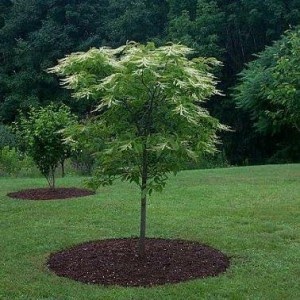
Oxydendrum arboreum – known commonly as sourwood – is one of the great trees for small spaces with a history of healing. The oval-shaped tree grows 20-25 feet tall, provides year round interest and exceptional fall color. It is common in the nursery trade as a large multi-stemmed tree or with a central leader. It requires very little pruning and is tolerant of most soil types.
As the tree matures its bark becomes gray, ridged and scaly, adding to visual interest in the winter months. Pioneers used to chew sourwood bark for mouth pain, draw its sap to relieve fever and brewed leaf tea for digestive maladies. Truely an all season tree for both its look and herbal remedies.
Today sorrel leaf tea is widely used to slake the thirst of mountain climbers. In spring the branches take a back seat to glossy green leaves 5-8 inches long and sour to the taste, hence the tree’s common name.
Summer ushers in drooping 4 to 8-inch clusters of waxy, fragrant white blooms very much like lily-of-the-valley. These are a favorite of pollinators and sourwood honey is a delicacy in Pennsylvania south to Florida and Louisiana. Where the tree is native.
The flowers make their parting bows, making way for unusual fruit that looks like brown, wooden capsules and contain numerous pointy seeds.
Fall is where this tree takes center stage in the landscape, dense leaves take on intensely beautiful shades of brilliant crimson, purplish-red and sometimes yellow.
Winter, spring, summer, fall: Oxydendrum arboreum shines as a lawn specimen, a garden feature, an ornamental addition in a tree line or as a clump in a wide open space.


